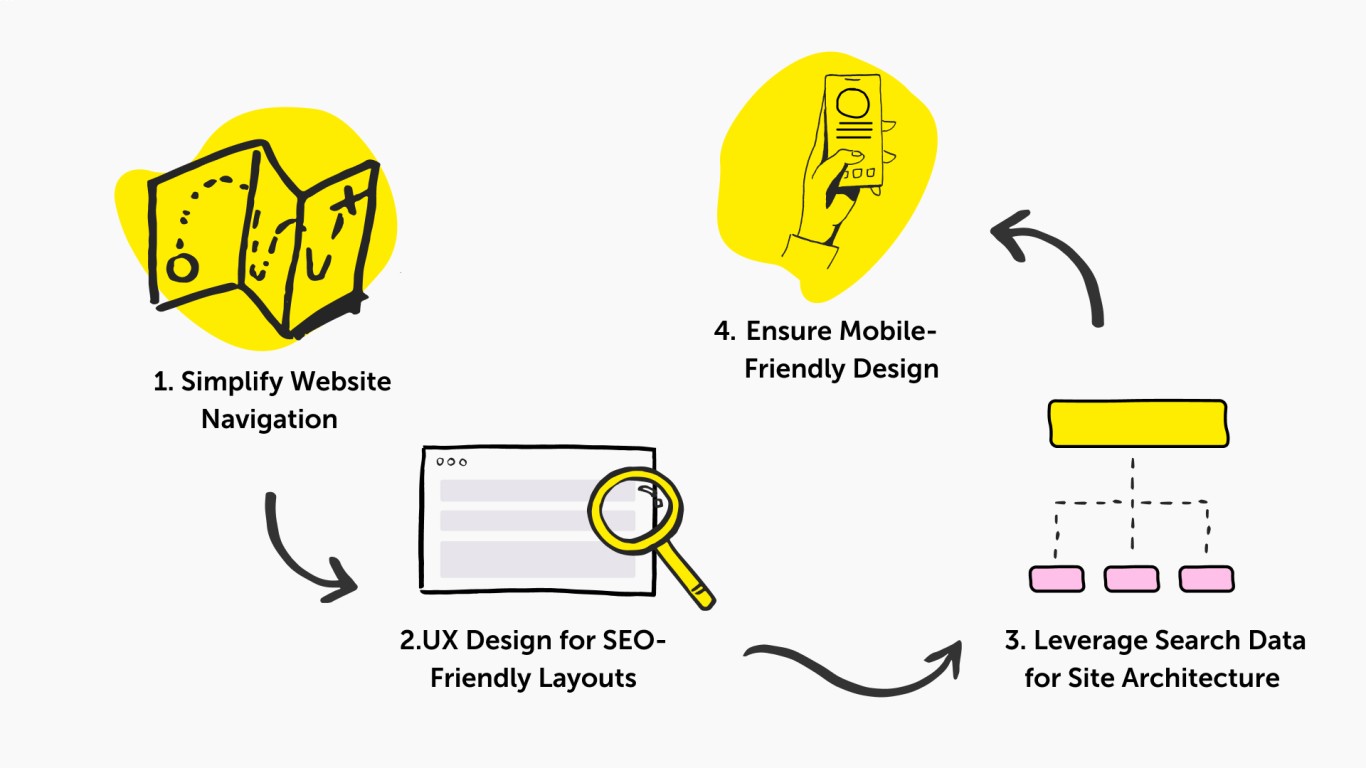Improve User Experience with Modern SEO Website Tactics
Improve User Experience with Modern SEO Website Tactics
In today's digital landscape, improving user experience is paramount. Websites are not only judged by how they look but also by how efficiently they serve users' needs. Modern SEO website tactics seamlessly blend design, function, and optimization to enhance user experience. This article delves into several effective techniques to achieve just that.
1. Understanding User-Centric SEO for Modern Audiences
To improve user experience, understanding your audience is crucial. Modern SEO tactics begin with knowing who your users are, what they seek, and how they behave online. Utilizing tools like Google Analytics can provide insights into user demographics, behaviors, and preferences.
- Identify Target Audience: Knowing who your users are helps tailor your content to meet their needs.
- Behavioral Analysis: Understanding how users interact with your website can guide improvements.
2. Optimizing Website Speed is Crucial for User Satisfaction
One key modern SEO tactic is optimizing website speed. Users expect websites to load quickly, and a delay of even a second can lead to higher bounce rates.
- Image Optimization: Use compressed and appropriately sized images to improve loading times.
- Minimize HTTP Requests: Reduce the number of elements on a page to speed up loading.
3. Mobile Optimization as a Sigificant Modern SEO Strategy
With mobile internet usage surpassing desktop, ensuring your website is mobile-friendly is critical. Mobile optimization goes beyond just shrinking everything to fit; it involves creating fluid, flexible designs.
- Responsive Design: Ensure your website adjusts smoothly to different screen sizes.
- Mobile-Friendly Content: Shorter paragraphs and easily clickable buttons improve mobile user experience.
4. Streamlining Navigation to Enhance User Exploration
A well-organized website navigation structure makes it easy for users to find what they need without digging through unnecessary clutter.
- Intuitive Menus: Use descriptive labels and a clear hierarchy in your navigation menu.
- Search Functionality: A robust search bar can significantly enhance user experience for content-heavy sites.
5. Quality Content Creation Engages and Retains Users
Content remains king in modern SEO tactics. Crafting high-quality, relevant, and engaging content is paramount to keeping users on your site.
- Content Relevance: Ensure your content is aligned with user intentions and search queries.
- Visual and Interactive Elements: Use images, videos, and infographics to make content more engaging.
6. The Role of UX/UI Design in SEO Optimization
User Experience (UX) and User Interface (UI) design significantly impact how users perceive a website. Aesthetically pleasing and functional designs enhance customer satisfaction.
- Consistent Branding: Maintain consistency in style, colors, and tone across your site.
- Readability and Accessibility: Use readable fonts and accessible color contrasts to ensure all users can navigate your site easily.
7. Implementing Structured Data for Better Search Visibility
Structured data helps search engines understand your site's content, improving search visibility and potentially increasing click-through rates.
- Schema Markup: Use schema markup to provide additional information about your business directly on search engine results pages (SERPs).
- Rich Snippets: Enhance listings with star ratings, reviews, or pricing to attract more clicks.
8. Boosting Engagement with Personalization and AI
Modern SEO tactics involve using personalization and AI to offer tailored experiences to users based on their preferences and past behaviors.
- Personalized Recommendations: Suggest content or products based on user history.
- Chatbots and AI Tools: Use AI for instant support and to streamline user interactions.
9. Leveraging Social Proof to Build Credibility
Social proof like reviews, testimonials, and social media shares can enhance user trust in your website, indirectly benefiting your SEO efforts.
- Customer Testimonials: Showcase genuine feedback to build trust.
- Social Media Integration: Encourage sharing and interaction to widen reach.
10. Measuring Success and Adapting Strategies
Finally, regularly measure the effectiveness of your strategies and be ready to adapt. SEO is an ongoing process, and staying flexible allows you to respond quickly to changes in user preferences or search engine algorithms.
- Use Analytics Tools: Track user engagement, page views, and conversion rates.
- Regular Updates: Continuously improve your website to keep up with evolving SEO trends.
Conclusion
Improving user experience with modern SEO website tactics involves a multifaceted approach. By understanding your audience, optimizing speed and mobile experience, enhancing content, and leveraging technological advancements like AI and structured data, you can significantly enhance both user satisfaction and search engine rankings. Continuously adapt and measure your strategies to maintain a competitive edge in the ever-evolving digital landscape.
FAQs
-
What is the first step in improving user experience with SEO tactics? The first step is understanding your target audience and their preferences using tools like Google Analytics.
-
Why is website speed so important for SEO? Faster website speeds lead to higher user satisfaction, reduce bounce rates, and are a ranking factor for search engines.
-
How does mobile optimization affect SEO? Mobile optimization improves user experience on all devices and is crucial as mobile usage continues to grow.
-
What role does content play in modern SEO tactics? High-quality, relevant content engages users, reduces bounce rates, and aligns with search intent, improving SEO rankings.
-
How can I leverage AI in my SEO strategy? Use AI for personalized user experiences and chatbots for instant customer support, enhancing engagement and retention.
#improveuserexperience #modernseo #websitetactics #userexperienceseo #seowebsitetactics
